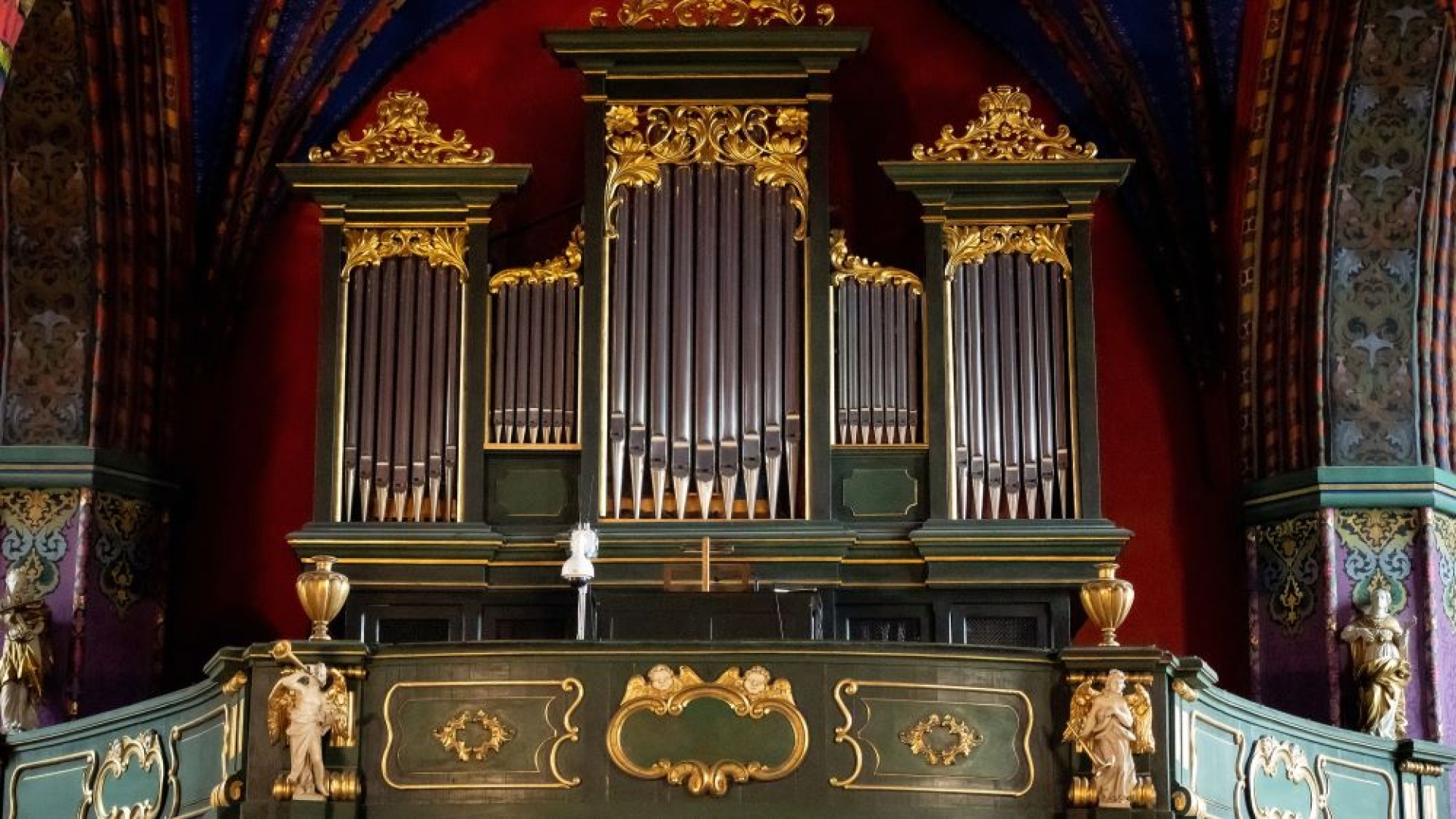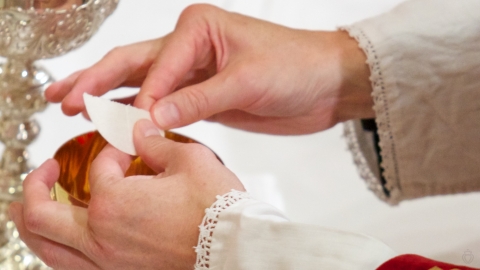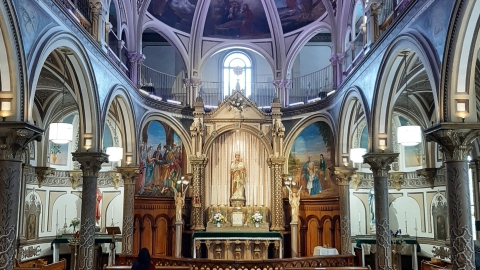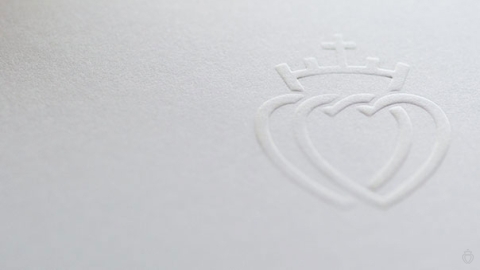50 Years of the New Mass: Saint Pius X and the Liturgical Movement (7)

Saint Pie X en octobre 1903
Half a century ago, Pope Paul VI imposed a liturgical reform on the whole Church in the name of the Council which had just ended. Thus from this was born the Mass of Vatican II. It was immediately rejected by two cardinals and, since then, opposition to it has not weakened. This sad anniversary is an opportunity to retrace its history.
After Dom Prosper Guéranger, who initiated it, the liturgical movement owes its impetus and its fulfillment to St. Pius X, the pope who gave it his letters of nobility and the support of Rome, which was essential for its diffusion throughout the Church .
A historian of the liturgical movement wrote: “With Pope Pius X, the liturgical movement entered into an entirely new period. Indeed, until then it had been the prerogative of individual forces in the Church. Voices were raised here and there, manifesting their common agreement on a kind of reaction against pervasive secularism, and advocating the return to sources as the true means of re-Christianization…But these appeals, which started to work against the fabric of daily practices, could hit without warning the indifference of a whole, and by far the most numerous, section of the clergy who took poorly to any change in habits of piety and methods to the apostolate. From the day when, on becoming pope, Pius X made himself the official propagator of the liturgical restoration, things changed. His multiple interventions on religious music, on the psalter, and on frequent communion, were so many energetic strokes which resolutely directed the Church towards a liturgical life steeped in traditional piety, sacramental grace, and inspired beauty.”[1]
The holy pope’s liturgical work is thus distinguished by its areas of intervention: religious music, decrees on holy communion, reform of the breviary and the liturgical calendar.
Before Rome
Pope St. Pius X, unlike other popes of his time, was first of all a pastor. Young vicar of the humble village of Tombolo, he created a small school for Gregorian chant there to help his parishioners participate in the singing of the mass. Upon becoming the parish priest of Salzano, he did the same, realizing an ideal of liturgical splendor which was admired by the clergy.
St. Pius X recalled this past in a blessing sent to Rassegna Gregoriana (magazine on Gregorian chant and the liturgy, published in Rome) on August 27, 1903, less than a month after his election to the Sovereign Pontificate. He said: “We must neither sing nor pray during Mass; we must sing and pray the Mass.” He added: “I have convinced myself through long experience that the pure harmonies of ecclesiastical chanting, as required by the sanctity of the temple and the sacred ceremonies which are performed there, have an admirable influence on piety and devotion, and consequently, on the true worship of God.”
In Mantua, having become bishop, for some time, he himself taught Gregorian chant, as well as the liturgical ceremonies, to his seminarians. Finally, as Patriarch of Venice, he published a pastoral letter on chant and Church music, on May 1, 1895: “Song and sacred music must by their melody excite the faithful to devotion, dispose them to receive more easily the fruits of grace that accompany all the holy mysteries celebrated with solemnity. Sacred music being thus closely united to the liturgy, likewise, it must harmonize with the text and present the qualities without which it would only be an hors d’oeuvre, in particular sanctity, artistic perfection, and universality.” These last words will be taken up by the Holy Pope in his decisions on religious chant.
The Restoration of Religious Music
The motu proprio Tra le sollecitudini on sacred music, is dated November 22, 1903, the feast of Saint Cecilia, patron saint of sacred music. The promptness with which the new pope intervened in this matter shows the importance he gave to it. He had suffered from liturgical decay and sought to remedy it. Ascending the throne of Peter, he immediately wanted to promote the forces of the liturgical movement which he already knew, and to give a vigorous impulse to all those who wished to enhance the beauty of worship.
The Abuses in Sacred Music
The pope, who wanted to remove from the holy temple anything “calculated to disturb or even merely to diminish the piety and devotion of the faithful,” or “that may give reasonable cause for disgust or scandal,” or, “which directly offends the decorum and sanctity of the sacred functions” decided to restore the sacred chant that had more or less entered into decline.
The causes were multiple: “whether it is owing to the very nature of this art, fluctuating and variable as it is in itself, or to the succeeding changes in tastes and habits with the course of time, or to the fatal influence exercised on sacred art by profane and theatrical art, or to the pleasure that music directly produces, and that is not always easily contained within the right limits, or finally to the many prejudices on the matter, so lightly introduced and so tenaciously maintained even among responsible and pious persons, the fact remains that there is a general tendency to deviate from the right rule, prescribed by the end for which art is admitted to the service of public worship.”
This right rule, specifies St. Pius X, is “is set forth very clearly in the ecclesiastical Canons, in the Ordinances of the General and Provincial Councils, in the prescriptions which have at various times emanated from the Sacred Roman Congregations, and from Our Predecessors the Sovereign Pontiffs.”
Intervention Become Necessary
Faced with this observation, Saint Pius X considers “Our first duty, without further delay, to raise Our voice at once in reproof and condemnation of all that is seen to be out of harmony with the right rule… in the functions of public worship and in the performance of the ecclesiastical offices.”
He then adds a capital sentence which will play a decisive role in the evolution of the Liturgical Movement: “Filled as We are with a most ardent desire to see the true Christian spirit flourish in every respect and be preserved by all the faithful, We deem it necessary to provide before anything else for the sanctity and dignity of the temple, in which the faithful assemble for no other object than that of acquiring this spirit from its foremost and indispensable font, which is the active participation in the most holy mysteries and in the public and solemn prayer of the Church.”
A remark is essential here. The expression “active participation”—the partecipazione attiva in the original Italian—will be repeated and will become a leitmotif of the late liturgical movement.
The expression is thus found eleven times in Vatican II’s constitution on the liturgy, Sacrosanctum concilium. It will serve to justify the most daring innovations and the post-conciliar liturgical upheaval. It is obvious that this new concept of the participation of the faithful is a profound distortion of the Holy Pope’s thoughts. Besides, the Latin text of St. Pius X’s motu proprio says in this place: “participatio divinorum mysteriorum” (“participation in the divine mysteries”), whereas Vatican II speaks of participatio actuosa (“active participation,” repeated in numbers 14, 19, 26, 27, 30, 41, 50, 79, 114, 121, 124).
St. Pius X finally presents the rules which he enacts as “the legal code of sacred music” and imposes the most scrupulous observation.
General Principles of Sacred Music
The guiding principle for judging sacred music is that it must “possess, in the highest degree, the qualities proper to the liturgy, and in particular sanctity and goodness of form, which will spontaneously produce the final quality of universality.”
By holiness, he means “exclude all profanity not only in itself, but in the manner in which it is presented by those who execute it.”
By the excellence of the forms, he understands a “true art, for otherwise it will be impossible for it to exercise on the minds of those who listen to it that efficacy which the Church aims at obtaining in admitting into her liturgy the art of musical sounds.”
By universality, it requires that the musical forms of religious music be “subordinated in such a manner to the general characteristics of sacred music that nobody of any nation may receive an impression other than good on hearing them.”
It is easy to understand how these principles strongly oppose liturgical inculturation, in particular musical inculturation, as it has been conceived since the Second Vatican Council and carried out today. Because universality is absent in most cases, and what about true art or sanctity?
[1] Dom Olivier Rousseau, Histoire du Mouvement liturgique (History of the Liturgical Movement) (Paris, Cerf, 1945). The quotation is taken from Dom A. Stoelen, La Papauté et le renouveau liturgique au début du XXe siècle, encyclopédie Tu es Petrus (The Papacy and the Liturgical Renewal at the Beginning of the Twentieth Century, encyclopedia, You are Peter) (Paris, Bloud et Gay, 1930).

From the principles he articulated, St. Pius X passes to concrete application. He describes three genres of music that have the qualities necessary to enter the sanctuary.
First there is Gregorian chant, which “possesses them in the highest degree.” This is why it is “the Chant proper to the Roman Church.” It is the first time that such an assertion has been found from the pen of a pope. The text adds: “Gregorian Chant has always been regarded as the supreme model for sacred music.” Hence the general rule: “the more closely a composition for church approaches in its movement, inspiration, and savor the Gregorian form, the more sacred and liturgical it becomes; and the more out of harmony it is with that supreme model, the less worthy it is of the temple.”
This is the reason why the holy pontiff call for “Special efforts…to be made to restore the use of the Gregorian Chant by the people, so that the faithful may again take a more active part in the ecclesiastical offices, as was the case in ancient times.”
“Classical polyphony” also has “the above qualities” to an eminent degree. St. Pius X cites sixteenth century music as an example with “the works of Pierluigi da Palestrina.” It “agrees admirably with Gregorian Chant… and hence it has been found worthy of a place side by side with Gregorian Chant, in the more solemn functions of the Church, such as those of the Pontifical Chapel,” i.e., papal ceremonies. It “too, must therefore be restored largely in ecclesiastical functions, especially in the more important basilicas, in cathedrals, and in the churches and chapels of seminaries.”
Finally, “modern music is also admitted to the Church, since it, too, furnishes compositions of such excellence, sobriety and gravity, that they are in no way unworthy of the liturgical functions.” That supposes a lot of discernment, in particular not to admit pieces whose external form would reproduce the style of profane music, and to avoid “the theatrical style.”
The Pope is targeting certain nineteenth century productions, which gave pride of place to the soloists and made the ceremonies more like opera pieces than sacred functions.
Some Practical Rules
St. Pius X recalls that “the language proper to the Roman Church is Latin. Hence it is forbidden to sing anything whatever in the vernacular in solemn liturgical functions.” Pius XII will soften this rule by allowing songs in the vernacular.
Pope Sarto also gives rules to fix the external forms that certain pieces must take on; the exclusion of women from the scola or the choir, for the reason that they cannot perform sacred ceremonies of which chant is an integral part; the consecration of the primacy of the organ and the prohibition of certain instruments such as the piano, as well as noisy and loud instruments: the drum, the bass drum, cymbals or brass bands.
The holy pope finally asks the bishops to take the means to fulfill his prescriptions, by establishing diocesan commissions of sacred music, by taking care of the formation and the practice of sacred chant in the seminaries, by resuscitating the old choirs and scholae sanctorum in the principal churches.
The Bishop of Rome will set an example in his diocese through his vicar, Cardinal Pietro Respighi, to whom he addressed a letter on December 8, 1903. He will have a Gregorian mass chanted by 1,200 seminarians in St. Peter’s Basilica on the occasion of the thirteenth centenary of St. Gregory the Great, whose name remains attached to the proper chant of the Church.
He will establish a special commission to revise the Gregorian books, the work of which will bear its first fruits under his pontificate, and which will be produced by the Benedictines of Solesmes. Finally, in 1911, he will build the Pontifical Sacred Music School in Rome.
These measures will produce the expected effects. Soon all Catholic people will participate in the chant of the Church. Gregorian chant will regain its place, thus demonstrating its universality and restoring the beauty of the liturgical ceremonies.
Related links
- 50 Years of the New Mass: Fr. Emmanuel, Parish Priest of Mesnil-Saint-Loup (6)
- 50 Years of the New Mass: Dom Guéranger and the Liturgical Movement (4)
- 50 Years of the New Mass: Dom Guéranger and the Liturgical Movement (5)
- 50 Years of the New Mass: The Making of the Roman Missal (1)
- 50 Years of the New Mass: The Development of the Roman Missal (2)
- 50 Years of the New Mass: The Tridentine Missal Put to the Test by Gallicanism …
(Sources : Vu de haut n°11/Parmi les sollicitudes – FSSPX.Actualités - 11/01/2020)



